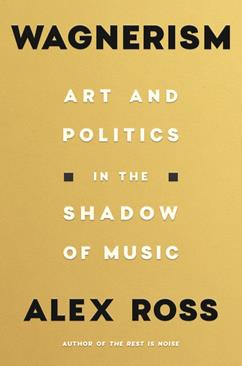Publications: Fall 2020



Wagnerism: Art and Politics in the Shadow of Music
By Alex Ross
Farrar, Straus and Giroux
Ross, the music critic of The New Yorker, examines the phenomenon of Wagnerism and its impact on artists, writers, anarchists, occultists, feminists, and gay-rights pioneers, while also exploring how Wagner’s legacy became inextricably linked to the Nazi regime and anti-Semitism. The book covers a wide range of artistic disciplines, from the architecture of Louis Sullivan to the novels of Philip K. Dick, from the Zionist writings of Theodor Herzl to the civil rights essays of W.E.B. Du Bois.
Access, Diversity, Equity, and Inclusion in Cultural Organizations
By Antonio C. Cuyler
Taylor & Francis
Subtitled “Insights from the Careers of Executive Opera Managers of Color in the U.S.,” this volume analyzes the lack of diversity among opera leadership and details the careers of six leading figures, including Wayne Brown of Michigan Opera Theatre, Michael Ching of Opera Memphis, and Torrie Allen of Anchorage Opera. The author investigates the impact of race on arts managers’ careers and contemplates how the field might attract and retain more racially diverse leaders to ensure its future.
Deviant Opera: Sex, Power, and Perversion on Stage
By Axel Englund
University of California Press
This study considers how, for decades, radical stage directors have repeatedly dressed canonical operas — from Handel and Mozart to Wagner and Puccini — in the regalia of S&M and fetishism. The author surveys some of the most controversial and successful of such productions, and argues that they provide a lens through which opera scrutinizes its own configurations of sex, gender, power, and violence.
Special Reports
The Alchemy of High Performing Arts Organizations
By Zannie Voss and Glenn Voss
This report from SMU DataArts and the Wallace Foundation, based on a study of 20 arts organizations, seeks to understand how high-performing organizations maintain financial stability and how struggling ones can turn their fortunes around. It uses interviews with the organizations’ leaders to identify what, in their view, leads to high performance. Although the findings reflect pre-pandemic conditions, the authors believe the report could be helpful in informing arts organizations’ future planning. Read the report.
Culture and Community in a Time of Crisis
From LaPlaca Cohen
The marketing and strategy firm LaPlaca Cohen has released this special report about the public’s view of arts organizations during the COVID-19 crisis, concentrating on the factors that might motivate philanthropic support and lead audiences to return to theaters. The report is based on 124,000 survey responses submitted before the end of May by audience members of arts organizations of all sizes and disciplines. Here are a few of the key findings:
- 51 percent of respondents reported participating in online cultural activities, though only 13 percent reported paying for access to digital content.
- Many respondents who were using online cultural offerings had not physically visited the same kinds of cultural organizations in the past year.
- 69 percent had done little or no planning for future cultural activities.
- The development of a vaccine and increased cleaning of facilities will be the top factors influencing respondents’ decisions return to cultural activities.
- Respondents were most interested in returning to cultural activities that are fun, lighthearted, and beautiful.
- Respondents were most interesting in arts organizations helping them during the pandemic to laugh and relax, stay connected, educate children while schools are closed, and offer distraction and escape.
This article was published in the Fall 2020 issue of Opera America Magazine.




